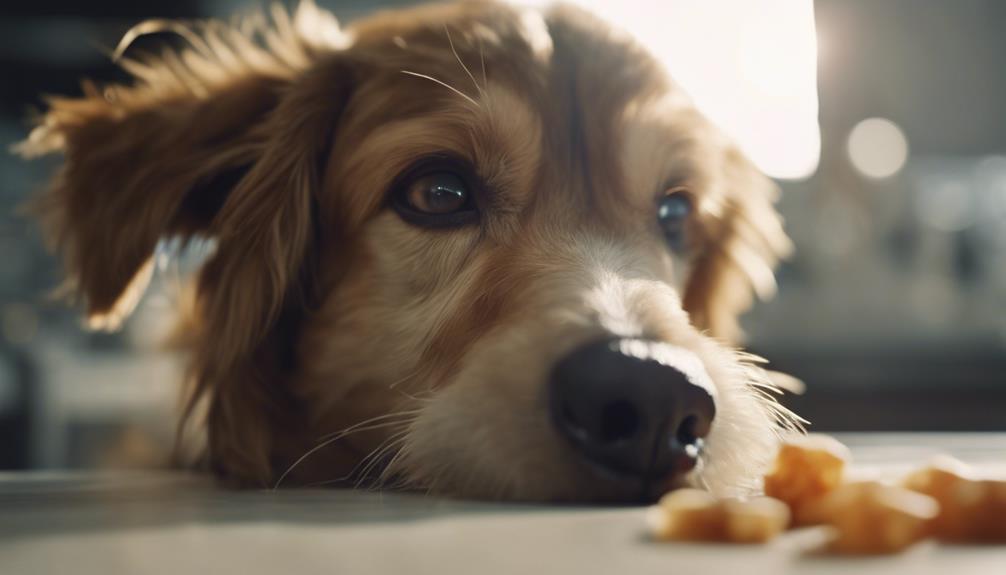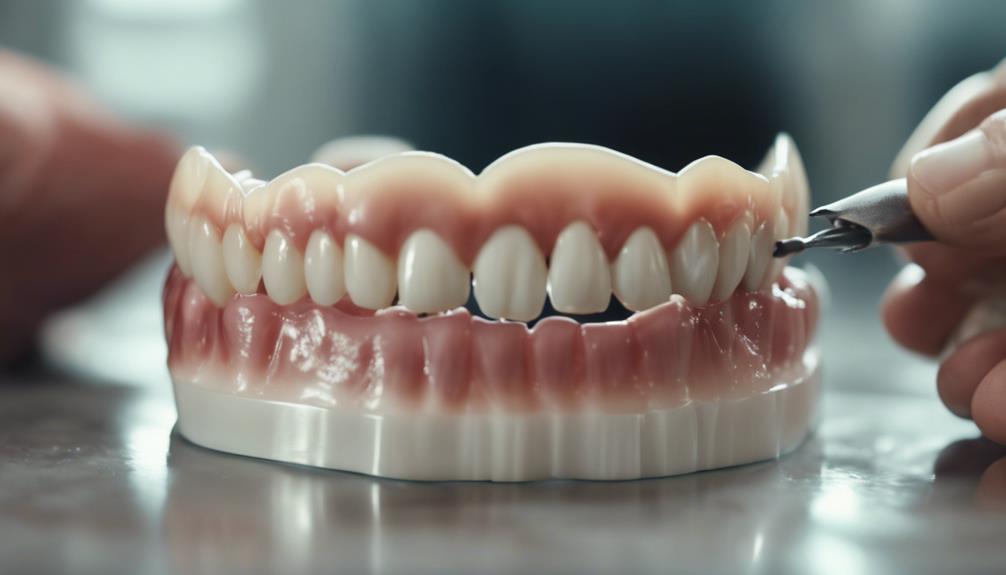Understanding the significance of dental health in dogs is essential for their overall well-being, yet many owners overlook the signs of potential issues. Dogs can exhibit a range of symptoms, from bad breath to behavioral changes, that may indicate underlying dental problems. Particularly for breeds like Corgis, who are predisposed to certain conditions, early identification and intervention are critical. As we explore the common indicators of dental distress, it becomes clear that recognizing these signs can lead to more serious health considerations that every pet owner should be aware of.
Importance of Dental Health

Regular dental care is crucial for maintaining overall health in dogs, as poor oral hygiene can lead to serious health issues beyond the mouth.
Preventive care, including routine brushing and dental check-ups, is essential for ensuring optimal dental hygiene.
Neglecting a dog's dental needs may result in plaque buildup, leading to tartar and gum disease. These conditions can cause pain and discomfort, affecting a dog's ability to eat and play.
Moreover, bacteria from dental issues can enter the bloodstream, potentially damaging vital organs such as the heart and kidneys.
To promote good dental health, dog owners should also consider dental chews and toys that support oral hygiene.
Prioritizing dental care is a critical responsibility for every dog owner.
Common Dental Issues in Corgis
Corgis are particularly susceptible to certain dental issues due to their unique jaw structure and compact size, which can lead to overcrowding and misalignment of teeth. Their genetic predisposition further exacerbates these problems, making regular dental hygiene essential.
Common dental issues in Corgis include:
- Periodontal disease, which affects the gums and supporting structures
- Tooth decay, leading to pain and potential tooth loss
- Overcrowded teeth, causing difficulty in chewing
- Misaligned bites, impacting overall health
Maintaining proper dental hygiene, including regular brushing and veterinary check-ups, is vital to prevent these issues.
Awareness of these common problems can help Corgi owners take proactive steps to ensure their pets' dental health.
Signs of Bad Breath

Bad breath in dogs, often a sign of underlying dental issues, should not be overlooked by pet owners. The causes of bad breath can include plaque buildup, periodontal disease, or even gastrointestinal problems. Identifying these issues early is crucial for your dog's health.
Common symptoms associated with bad breath may involve a noticeable odor coming from the mouth, which can indicate bacteria or food particles stuck in the teeth.
To address this issue, bad breath remedies include regular dental check-ups, brushing your dog's teeth, and providing dental chews. Additionally, maintaining a healthy diet can significantly reduce bad breath.
Always consult your veterinarian if bad breath persists, as it may signal more serious health concerns requiring professional attention.
Changes in Eating Habits
Changes in a dog's eating habits can be an important indicator of underlying dental issues.
For instance, a dog may show reluctance to chew hard food or develop a preference for softer options, which could signal pain or discomfort in their mouth.
Recognizing these changes early can help ensure timely veterinary intervention and maintain your dog's overall health.
Reluctance to Chew
A noticeable reluctance to chew can be a significant indicator of underlying dental issues in dogs, often manifesting as changes in their eating habits. This behavior may arise due to pain or discomfort caused by dental problems.
Observing your dog's reluctance to chew can help you identify potential issues early. Look for the following signs:
- Decreased interest in chewing toys
- Avoidance of dental treats
- Changes in the type of food they prefer
- Difficulty picking up or holding food
If your dog exhibits these signs, it's crucial to consult a veterinarian for a thorough dental examination.
Early detection can prevent more severe problems and ensure your dog's overall health and well-being.
Preference for Soft Food
Increased preference for soft food can often indicate that a dog is experiencing discomfort or pain related to dental issues, prompting a shift in their eating habits.
When dogs develop soft food preferences, it may be due to problems like periodontal disease or broken teeth, making it challenging for them to chew harder food. Owners should observe these dietary adjustments closely, as they can signal underlying health concerns.
Key signs to watch for include:
- Reluctance to eat hard kibble
- Preference for canned or moistened food
Addressing these changes promptly with a veterinarian can help identify potential dental issues and ensure the dog receives appropriate treatment, maintaining their overall health and well-being.
Gum Inflammation Symptoms

Gum inflammation in dogs, often characterized by redness, swelling, and tenderness, can lead to significant discomfort and potential complications if left untreated.
Recognizing the symptoms of gum inflammation is crucial to prevent gum disease and explore treatment options.
Here are some common signs to watch for:
- Red or swollen gums: A noticeable change in gum color or size.
- Bleeding gums: Blood can appear during eating or dental care.
- Bad breath: Persistent foul odor from the mouth.
- Difficulty eating: Reluctance to chew or preference for softer food.
Timely intervention can help maintain your dog's oral health and overall well-being.
Excessive Drooling Indicators
Excessive drooling in dogs can be a sign of various dental issues that require attention.
Common causes of drooling include oral pain, gum disease, and foreign objects lodged in the mouth.
Recognizing the signs of discomfort and knowing when to seek veterinary help is essential for maintaining your dog's oral health.
Common Causes of Drooling
Various factors can contribute to excessive drooling in dogs, indicating potential underlying dental or health issues that warrant attention. Understanding these causes is essential for maintaining your dog's well-being.
Here are some common causes:
- Poor Oral Hygiene: Inadequate dental care can lead to tartar buildup and gingivitis.
- Nutritional Deficiencies: Lack of essential vitamins and minerals may affect saliva production.
- Dental Diseases: Infections or abscesses can cause discomfort, resulting in drooling.
- Foreign Objects: Items stuck in the mouth can lead to irritation and excessive saliva.
Recognizing these causes can help in addressing your dog's health and ensuring proper dental care.
Signs of Oral Pain
Recognizing signs of oral pain in dogs is vital, as excessive drooling can often indicate underlying discomfort related to dental issues. This symptom may arise from various causes, including gum disease, tooth fractures, or oral infections.
When a dog experiences oral pain, it may drool more than usual, as they struggle to manage discomfort. Other indicators include difficulty eating or chewing, reluctance to play, and changes in behavior.
Maintaining proper oral hygiene is essential for preventing dental problems and promoting overall health. If you notice excessive drooling alongside signs of discomfort, it is crucial to address these pain management concerns promptly.
Early intervention can help safeguard your dog's well-being and ensure a happier, healthier life.
When to Seek Help
A dog's persistent drooling can serve as a critical signal that immediate veterinary attention may be necessary to address potential underlying dental issues. Recognizing when to seek help is essential for your dog's health.
Consider the following indicators that excessive drooling might be a concern:
- Difficulty chewing or eating
- Swelling around the mouth or jaw
- Bad breath that persists despite dental check-ups
- Blood in saliva or drool
If you observe any of these signs, it is crucial to consult a veterinarian promptly.
Regular dental check-ups and professional cleaning are vital in preventing serious dental problems and ensuring your dog's overall well-being.
Prompt action can lead to better health outcomes for your furry friend.
Difficulty Chewing or Biting

Difficulty chewing or biting can indicate underlying dental problems in dogs, often leading to discomfort and reluctance to eat.
Dogs may struggle with certain chewing techniques, which can arise from issues such as gum disease, broken teeth, or misalignment. These biting difficulties not only affect their ability to enjoy food but can also result in frustration and anxiety.
Common signs include:
- Hesitation to chew on toys or food
- Excessive drooling while eating
If you notice your dog exhibiting these behaviors, it is crucial to consult a veterinarian.
Early intervention can help prevent more severe dental issues and ensure your dog maintains a healthy and happy lifestyle.
Behavioral Changes to Note
Uncharacteristic behavioral changes in dogs can often signal underlying dental issues that may require immediate attention. When a dog experiences dental pain, it may display anxiety indicators and social withdrawal. Observing your dog's behavior is crucial for early detection of dental problems.
Watch for these signs:
- Reluctance to eat or chew
- Increased whining or vocalizing
- Avoidance of play or interaction
- Excessive drooling or pawing at the mouth
If you notice any of these behavioral shifts, it is essential to consult a veterinarian. Addressing dental issues promptly can prevent further pain and complications, ensuring your dog remains healthy and happy.
Regular dental check-ups can help catch problems before they escalate.

